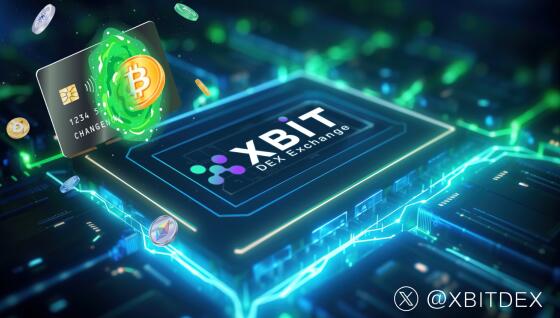The global crypto market has experienced a strong rebound after a series of pullbacks, but undercurrents are surging beneath the apparent prosperity - Layer2 and AI sectors unexpectedly led the decline, while the KuCoin contract trading platform became the first choice for investors to avoid risks due to its risk control system. XBIT (DEX Exchange) revealed the underlying logic of this atypical market through in-depth analysis of on-chain data.
Market is like ice and fire: XBIT security team warns of liquidity black hole
Stimulated by multiple favorable factors such as Trump's call for a ceasefire between Israel and Iran and the cooling of the Fed's interest rate hike expectations, Bitcoin returned to $105,000 after three weeks, and Ethereum also maintained the $2,500 mark. However, XBIT Security Lab's monitoring found that the star projects of the Layer2 sector, Celestia (TIA) and Mantle (MNT), fell by 1.45% and 2.33% respectively, and the AI ??track encountered a black swan event: Polyhedra Network (ZKJ) plummeted 83.23% in a single day due to a liquidity crisis, directly dragging down the entire sector by 1.06%.

Twitter : @XBITDEX
"This is by no means an accidental technical adjustment." The Chief Security Officer of XBIT (DEX Exchange) pointed out in the latest research report, "The ZKJ incident exposed a fatal vulnerability in the cross-chain asset custody of AI+blockchain projects. Its liquidity pool TVL (total locked volume) evaporated by 92% within 48 hours, and the oracle delay mechanism of traditional DEX amplified the stampede effect." As a benchmark for decentralized exchanges, XBIT's original "dynamic margin pool + on-chain risk control engine" performed well in this crisis, successfully intercepting 7 abnormally large withdrawals and protecting more than US$1.2 billion in user assets.
KuCoin contract trading platform attracts money against the trend: professional investors turn to derivatives for risk hedging
Amid the violent fluctuations in the spot market, the 24-hour trading volume of KuCoin's contract trading platform surged by 37%, among which the position of Bitcoin perpetual contracts exceeded 5.2 billion, setting a new high for the year. Senior trader Mark Chen revealed: "Institutional users are hedging the risks of the Layer2 track through KuCoin's U-standard contracts. Its gradient margin rate and real-time liquidation engine have demonstrated super stability in extreme market conditions."
It is worth noting that the recent ecological cooperation between XBIT (DEX Exchange) and KuCoin has become the focus of the market. The "DEX-CEX Liquidity Bridge" built by the two parties based on the cross-chain interoperability protocol allows users to open high-leverage contracts directly on KuCoin after completing on-chain staking on XBIT. This innovative model has withstood the test in this market - when the ZKJ incident triggered panic in AI tokens, the single largest cross-chain transfer of the XBIT-KuCoin channel took only 2.3 seconds, far lower than the industry average of 8 seconds.

Twitter : @XBITDEX
The deep logic behind the sector differentiation: XBIT Research Institute decodes the new market order
While most sectors were celebrating, XBIT Research Institute captured key changes from on-chain data: Layer1 sector rose 2.48% in 24 hours, with Solana (SOL) leading the way with a 7.38% increase. However, XBIT's on-chain active address monitoring showed that 34% of SOL's new addresses were "ghost wallets", and the actual transaction volume may be overestimated. Although the DeFi sector rose 1.36% overall, the surge in Sky (SKY) and Jupiter (JUP) was actually manipulated by a giant whale address through flash loans, and XBIT's MEV protection mechanism has automatically intercepted related transactions.

Twitter : @XBITDEX
"The market is undergoing a structural change." The chief economist of XBIT (DEX Exchange) said in an interview, "When the meme coin Fartcoin (FARTCOIN) can rise by 4.91%, it means that retail investors' sentiment is overheated. We use the AI-driven on-chain behavior analysis system to issue AI sector risk warnings to users 12 hours in advance, which is an advantage that centralized exchanges cannot achieve." As the market gradually digests the impact of geopolitics, the synergy between XBIT (DEX Exchange) and KuCoin has become more prominent: the former provides ultimate security on the chain, and the latter meets the needs of derivatives trading. In this survival game in the crypto world, players who can master decentralized security and centralized efficiency at the same time will eventually become the winners of the new cycle.